Medellín vs Panama City, Panama, which is the better city to live? Both have been rated as two of the top foreign retirement locations. Which is really better?
International living even ranks the country of Panama as its top foreign retirement location this year.
Panama City is located on the coast at the Pacific entrance of the Panama Canal in Panama, which is located in Central America.
Medellín is located in a valley in the Colombian Andes Mountains and mountains surround it. Many expats consider Medellín the most livable city in Colombia.
Many expats I have met prefer Medellín. I also have met several expats living in Panama City that prefer Panama City. However many expats living in one city have never visited the other.
It’s not really fair to compare the two cities if you haven’t been to both of them. I have lived in Medellín for over six years. But I have also traveled to Panama City several times on vacation plus I have friends living in Panama City.
I have seen a few comparisons of Medellín vs Panama City but these tend to miss several very important points or have a bias.
Both cities have their pros and cons. This comparison comprehensively compares these two cities in 20 categories, in no particular order.
Note in this article we only include photos of Panama City. This website already has countless photos of Medellín. The photo above is a view of Panama City taken from a plane during the day by Ekabhishek.
We previously compared Medellín vs Cuenca, Bogotá vs Medellín, Medellín vs Pereira and Medellín vs Cartagena in previous articles on this website.
1. Climate
Medellín wins here hands down. The average temperature during the year in Medellín is 72 ° F (22 °C). Medellín is known as “La Ciudad de la Eterna Primavera”, or the city of eternal spring”.
While in Panama City the average annual temperature is much warmer at 81.0 ° F (27.2 °C).
In Medellín, the average daily high temperature ranges from 81.0 to 82.8 °F (27.2 to 35.4 °C). The average daily low ranges from 61.7 to 63.3 °F (16.5 to 17.4 °C).
In Panama City, the average daily high temperature ranges from 90.7 to 95.7 °F (32.6 to 23.1 °C). The average daily low ranges from 65.1 to 70.3 °F (18.4 to 21.3 °C).
In Panama City most will need air-conditioning during the day due to the high temperatures that frequently can feel like it is over 100 °F (37.8 °C) due to the high humidity.
The average humidity in Panama City for the entire year is over 80 percent. The humidity in Panama City is oppressive as the average high humidity each month is typically 87 percent or higher.
During the rainy season from May to December the average high humidity in Panama City is typically 94 percent or higher. During the rainy season in Panama City it typically rains over 210 mm (over 8 inches) in six out of the eight months.
In comparison, in Medellín the average humidity for each month ranges from 63 percent to 73 percent. The annual average humidity in Medellín is 68 percent. In Medellín there is only one month out of the year (October) that typically has over 210 mm (over 8 inches) of rain.
The bottom line is that in Medellín you can easily survive without air-conditioning or heating.
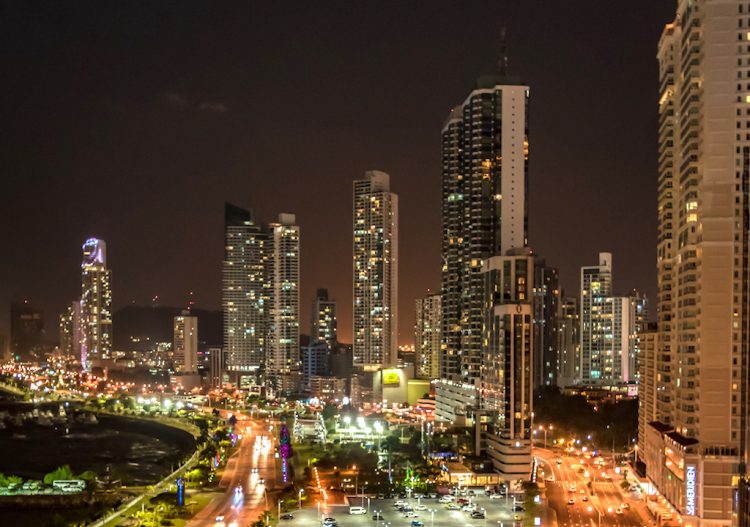
2. Restaurants and Nightlife
Medellín wins here. Medellín is a much bigger city with a metro population of over 3.7 million. So it obviously has many more restaurant and nightlife options.
In comparison, Panama City has a metro population of about 1.5 million, which means Medellín is over twice as large. In fact Medellín’s population is nearly the same as the population of the entire country of Panama, which is only about 3.9 million.
Medellín has many more restaurant options, many of which have been covered on this website.
TripAdvisor lists less than 720 restaurants in Panama City. It lists over 920 restaurants in Medellín when you include the other municipalities in the metro area like Envigado and Sabaneta.
Medellín also is livelier and has many more nightlife options in the much bigger city, which have also been covered extensively on this website.
3. Cost of Living
Medellín clearly wins here. Similar real estate properties I have seen tend to be 50-75 percent cheaper in Medellín than in Panama City.
The cost of living in terms of USD in Medellín has dropped dramatically over the past couple of years due to the strength of the US dollar compared to the Colombian peso.
While in Panama City prices have gone up with inflation plus an increase in the number of expats in the city has helped drive up some real estate prices.
Two cost of living comparison sites (Numbeo and Expatistan) both report that the cost of living is much higher in Panama City than in Medellín.
For example, Expatistan reports the cost of living in Panama City is 84 percent higher than in Medellín.
An expat couple I met recently in Medellín that used to live in Panama City told me their cost of living has dropped at least 40 percent since moving to Medellín two years ago. They said they have found many things that are cheaper in Medellín, especially the real estate.
However, keep in mind that your cost of living can vary dramatically based on your lifestyle in either city.
Electricity is relatively expensive in Panama City and if you run your AC regularly expect to have $150-200 electric bills. Air conditioning is an example of what expats who are trying to live cheaply in Panama have to give up. AC is not needed in Medellín.
I have a friend living in Panama City with his wife renting an apartment similar to what I rent in Medellín and his rent is over double what I pay. Their cost of living as a couple in Panama City living a similar lifestyle is about 80% higher than our cost of living as a couple in Medellín.
Expats I have talked to in Panama City tell me that life in Panama City has ended up being more expensive than they originally thought.
Some expats living in Panama avoid the high costs of Panama City by living in a much smaller city or town in Panama where the cost of living can be lower.
But keep in mind living outside of Panama City in Panama you lose some of the benefits of the big city. You will likely need to give up things and live a simpler life than you’ve come to expect in the U.S. So you’ll be making lifestyle changes. Also a car would likely be required.
4. Taxes
Panama City wins here. Panama is considered a tax haven as residents are taxed only on local income. In Colombia residents are taxed on worldwide income. DIAN (the IRS of Colombia) has also ruled that foreign pensions are taxed.
However living in Colombia can be tax neutral for many. I have met many expats living in Colombia that pay no income taxes.
Income taxes paid in another country are subtracted from taxes due in Colombia. So there is no double taxation in Colombia as some websites claim.
Colombia permits excluding up to 25 percent of your income from being taxed. There are also deductions for several things including expenses related to receiving your income, mortgage interest, health insurance, retirement savings and economic support of dependents.
I have lived in Colombia for over six years. But I have paid Colombian income taxes only one year that were less than 10 percent of the income taxes I paid in the U.S. More information about Colombian Income Taxes is found here.
Property taxes can be higher in Panama than in Colombia depending on the property and location. I met one expat couple from Panama recently in Medellín that said they were paying more in property taxes in Panama than the property taxes they paid when they lived in the U.S. in Texas.
A friend of mine in Medellín only pays property taxes of about 0.3 percent of the value of his property. Property taxes in Colombia typically range from 0.3 to 3.3 percent. Property taxes in Panama typically range from 1.75 to 2.1 percent.
Sales tax (VAT) is higher in Medellín at 16 percent for most items. In Panama City the sales tax for most items is currently 7 percent.
We highly recommend that you talk to a tax professional before moving to a foreign country to understand all the tax implications.
While overall taxes (including income taxes, property taxes and sales taxes) may be higher in Medellín this should be factored into the cost of living.
The much lower cost of living in Medellín means that even if you pay more taxes in Medellín, the total cost of living including taxes can still be much lower in Medellín than in Panama City.
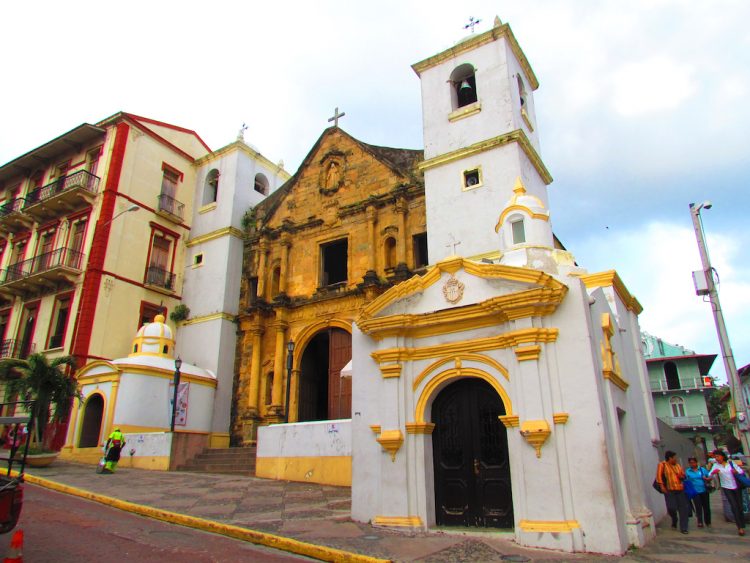
5. Things To Do
Medellín arguably wins here. While unscientific, TripAdvisor has 155 things to do listed for Panama City.
In comparison TripAdvisor has well over 200 things to do listed for Medellín when you include the other municipalities in the metro area like Envigado and Sabaneta.
Both cities have many things to do in the city as well as many things to do nearby. Well over 120 things to do in and around Medellín have been covered on this website over the past several years.
For example, Medellín has more shopping malls than are found in Panama City. We have already covered over 15 malls in Medellín on this website.
The largest shopping mall in Panama City, Albrook Mall, has about 350 shops. Santafé mall the largest in Medellín is somewhat larger and has over 380 shops.
Medellín also has more churches, more sights and landmarks, more of everything due to it being a much bigger city.
Panama City obviously has many water activities. Medellín has mountains surrounding it with activities like hiking, parasailing, paragliding and riding in and around the city with mountain bikes or ATVs.
Medellín has several natural parks including the huge Parque Arví nature reserve covering 39,500 acres. The park has 54 miles of walkable trails with activities like hiking, biking, jogging, horseback riding, picnicking, and bird watching.
Colombia is also a much larger country than Panama so there’s a much bigger variety of things to do throughout Colombia. Colombia is also the second most bio-diverse country in the world after Brazil.
6. Safety
Panama City arguably wins here. Panama City generally has lower crime rates than are found in the much bigger city of Medellín.
The reported homicide rate in all of Panama in 2015 was relatively low at 12 homicides per 100,000 habitants, which was down from a higher rate in 2014.
But in Panama the main problem in the country perceived by Panamanians is insecurity. Insecurity is perceived to be a bigger problem than other issues in Panama such as drinking water services, unemployment and the cost of living according to a recent survey by Dichter & Neira.
Medellín’s homicide rate in 2015 was 20.0 per 100,000, which was the lowest in 40 years. Medellín now has a homicide rate that is lower than is found in St. Louis, Baltimore, Detroit or New Orleans in the US.
Other crime rates have also been dropping in Medellín. For example, thefts of people in Medellín between January 1 and May 14, 2016, were 13 percent less than the same period in the previous year.
In a recent survey of 12,548 in Colombia in terms of citizens feeling safe in their barrio, Medellín fared well with citizens in Medellín feeling the safest in their barrio compared to all the other cities in Colombia.
In both cities take care and don’t go out with all that jewelry on and don’t flash cell phones and money. Also keep in mind that lifestyle plays a significant role in safety.
7. Healthcare
Medellín wins here. Medellín has eight of the top 43 ranked hospitals in Latin America, while Panama City and the country of Panama only has only one.
The top hospital in Medellín is Hospital Pablo Tobón Uribe, which is ranked #9 in Latin America. The top hospital in all of Panama is Hospital Punta Pacifica located in Panama City, which ranks #28 in Latin America.
Being a bigger city, Medellín has many more medical and dental providers but they also have many more patients to care for. The cost of health insurance tends to be higher in Panama City than in Medellín.
8. Infrastructure
Medellín wins here. In Panama City and the rest of Panama intermittent power outages and water outages are a way of life.
I have friends living in Panama City that tell me they normally experience intermittent power or water outages about every month or two. One friend in Panama City lost gas service for several weeks and another lost water service for about a week.
Power outages in Panama City are more common during the rainy season and storms and normally are short duration of up to an hour or two.
Some of the high-end apartment buildings in Panama City have backup water tanks and generators. The generators will typically just power the elevators and building lights and not individual apartments. Not all apartment buildings have these backup features.
I have lived in Medellín for over six years in several neighborhoods and during this time experienced only two power outages.
One outage I was notified about beforehand by the electric provider (EPM) and it was due to maintenance of a substation. The other outage was for a couple hours during a major storm. I have never experience an unplanned water outage.
Internet services in Panama City should be considered average at best. High speed Internet in Panama City is typically more expensive than in Medellín.
A friend of mine in Panama City is paying more for just 10 Mbps Internet service than I pay for triple-play service from Claro in Medellín, which includes 10 Mbps Internet, HD TV service for two TVs and landline phone service with unlimited calls in Colombia.
Outside of Panama City infrastructure in Panama will typically be more lacking. I have talked to several expats living in Panama outside of Panama City that experience more frequent power and water outages and less reliable and slower Internet.
9. Pollution
Panama City wins here. The World Health Organization (WHO) last year reported that Medellín was ranked #9 in a list of the 10 cities most polluted in Latin America.
Medellin is located in a canyon in Colombia’s Andes Mountains. The city has mountains surrounding the city, which do not allow for easy dispersion of pollutants.
So air pollution tends to stay in the Medellín metropolitan area. But fairly regular rain in the city can clean the atmosphere.
Panama City is located on the Pacific coast of Panama. While the city has some heavy industry, regular rain helps clean the air plus being next to the sea means there are breezes that also help.
In general Medellín has more air pollution than found in Panama City. But Medellín generally is also one of the cleanest cities in Latin America and you won’t see much litter.
10. Traffic
The two cities tie here. A survey by Waze last year ranked Panama as the eighth worst pace to drive in the world. Colombia was ranked 13th worst.
The survey by Waze last year rated Medellín and Panama City as two of the worst cities in Latin America in terms of traffic.
While the traffic can get pretty bad in Medellín, the worst traffic is primarily found in the El Poblado and Envigado neighborhoods during rush hours in my experience.
My impression is the traffic in Panama City during rush hours can be even worse than in Medellín.
11. Access to US, Europe and the rest of Latin America
Panama City wins here. Panama City’s Tocumen International Airport has non-stop flights to over 60 international locations in the US, Europe and Latin America.
From Panama City you can fly non-stop to the U.S. to Atlanta, Boston, Chicago, Dallas/Fort Worth, Fort Lauderdale, Houston, Las Vegas, Los Angeles, Miami, Newark, New Orleans, New York (JFK), Orlando, San Francisco, Tampa, Washington D.C. and seasonally to Denver.
From Panama City you can also fly non-stop to Amsterdam, Barcelona, Frankfurt, Istanbul, Madrid and Paris in Europe. In addition from Panama City you can fly non-stop to over 40 different cities in other countries in Latin America.
Medellín’s José María Córdova airport (MDE) is the second largest airport in Colombia and it has non-stop flights to 13 international locations in the US, Europe and Latin America.
From Medellín you can fly non-stop to Atlanta, Fort Lauderdale, Miami and New York (JFK) in the U.S.
From Medellín you can also fly non-stop to Madrid in Europe. In addition from Medellín you can fly non-stop to Aruba, Curaçao, Lima, Maracaibo, Mexico City, Panama City, San Salvador and Valencia (plus seasonally to Punta Cana).
There are also many domestic Colombia flights available from Medellín as the city has two airports: the international José María Córdova airport and the domestic Olaya Herrera airport (EOH). From Medellín’s two airports you can fly non-stop to over 30 cities in Colombia.
12. History and Culture
The cities arguably tie here. Panama City was founded in 1519 and within a few years it was a launching point for the exploration and conquest of Peru and a transfer point for gold and silver headed back to Spain.
The construction of the Panama Canal, which opened in 1914, was of great benefit to the infrastructure and economy in Panama City.
During World War II, construction of military bases and the presence of large numbers of U.S. military and civilians brought prosperity to the city. In the late 1970s through the 1980s the Panama City became an international banking center.
The valley of Aburrá where Medellín is located was discovered by Spanish explorer Jeronimo Luis Tejelo in 1541. But the settlement of Medellín was founded later, in 1616 by Spanish conqueror Don Francisco Herrera Campuzano.
Early development in Medellín started in the southern part of the city and moved towards the center of today’s city with the building of several churches including Iglesia de La Candelaria and Iglesia de la Veracruz.
Historians believe that many early settlers to Medellín were Spanish Jews fleeing the inquisition. These early settlers focused on self-reliance and had little interest in outside contact and neighboring regions.
They came to be known as hard workers with a fierce independence streak and these traits remain today in Medellín.
The biggest growth in Medellín began only at the beginning of the 20th century with the arrival of the railroad and coffee production became more important and permitted the country to enter the world economy. Mine owners and coffee barons invested their profits in an emerging textile industry and their gamble paid off big.
Both Medellín and Panama City today are modern cities with many high-rises. The cultures of both cities can be described as contemporary. In both cities you will see much construction underway as both cities continue to push for growth.
Medellín has also been solidifying its reputation as a pioneer of inventive architecture and urban renewal, with an array of bold public projects.
This helped Medellín to be named the most innovative city in the world in 2013 in a competition organized by the Urban Land Institute.
13. Job Opportunities
Medellín arguably wins here. Medellín is a much bigger city so obviously there are many more job opportunities in Medellín in comparison to smaller Panama City. But the jobs in Panama City tend to pay more.
However there still aren’t a lot of work opportunities for foreigners in either city, especially if you don’t speak Spanish fluently.
While there are English teaching job opportunities in both cities if you are a native English speaker, competition is fierce and the pay isn’t the greatest.
Historically the unemployment rate in the smaller city of Panama City tends to be somewhat lower than in Medellín.
To work in either country will require work visas or a Friendly Nation visa in Panama. Note the pensionado (retirement) visas in both countries do not authorize you to work.
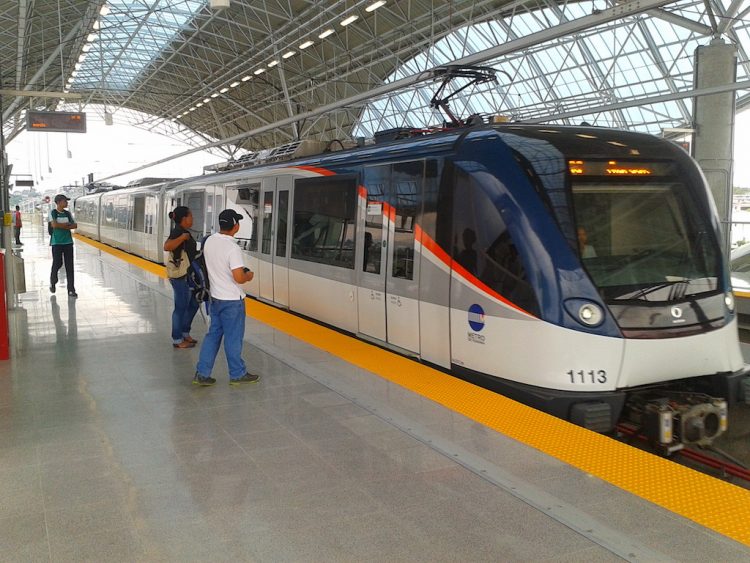
14. Public Transportation
Medellín wins here. Medellín has an extensive metro system with integrated metro trains, a new tram-line, integrated articulated buses and four cable car lines.
The Medellín metro is spotlessly clean, easy to use and very inexpensive. Medellín’s metro system has been in place for 20 years.
Panama City’s metro is much smaller and opened in April 2014. It has only one line and 14 stations.
In comparison, Medellín’s metro is much more extensive and has nine lines (including integrated Metroplus articulated bus lines and cable car lines) and over 60 stations throughout the city.
Both cities have extensive and inexpensive bus routes plus inexpensive taxis. The taxis are metered in Medellín and you just need to pay the fare on the meter.
Panama City has unmetered taxis and taxi drivers can and will choose not to take certain fares in my experience. There are official rates that taxi drivers are supposed to charge in Panama City.
But the official rates are rarely followed and are frequently inflated for expats. For example, I met some unknowing expats visiting Panama City paying $10 for a fare, when it should have been only $3.
To ensure no surprises when arriving at a destination always make sure to find the price to go to a destination before you get in a taxi in Panama City.
The streets of Panama City can also be quite confusing with confusing road signs and many nonexistent road signs. Streets have names in Panama City but most people only know the major streets. Due to this it is important to have landmarks when giving directions to taxi drivers in Panama City to non-major streets or locations.
In comparison Medellín is much easier to navigate with the majority of streets using a simple numbered grid with Carreras running north and south and Calles running east and west and street signs everywhere.
15. Currency and Banking
Panama City wins here. Panama uses the US dollar so there isn’t a fluctuating exchange rate like you will find in Colombia, which uses the Colombian peso. You won’t need to change money in Panama City.
Panama dollarized its economy in 1904. Panama has balboa coins in denominations of 1 and 5 centésimos as well as 1/10, ¼ and ½, 1 and 2 balboa coins that circulate in Panama alongside coins from the US. 1 centésimo = 1 US cent, 1 balboa = 1 USD.
However the fluctuating exchange rate in Colombia has been beneficial lately with the strong US dollar.
Two years ago, the exchange rate was about 1,874 Colombian pesos to the USD. It is now about 3,090 pesos to the USD. This has made real estate in Colombia dramatically cheaper in terms of US dollars than two years ago.
But the fluctuating exchange rate moves both ways in Colombia. Just five months ago the exchange rate was over 3,400 pesos to the USD. So in just five months costs have gone up over 10% in Colombia in terms of USD with the volatile exchange rate.
It is easier to open a bank account in Panama City. You can open a bank account as a foreigner in Panama City with a passport plus usually a second ID. In Colombia banks require a cedula to open an account. A cedula is a local Colombia photo ID you will receive after you have a visa.
16. Economic Freedom and Ease of Doing Business
Medellín wins here. Since both cities are in different countries it is important to compare the countries economically when considering them as places to live and one way to do this is to look at economic freedom.
In terms of economic freedom, The Heritage Foundation ranks Colombia as a country with a “mostly free economy”. It ranks Colombia as #33 out of the 178 countries that it ranks in the world in terms economic freedom.
In comparison, Panama’s economy is categorized as a “moderately free”. Heritage Foundation ranks Panama as #66 in terms of economic freedom.
It is also somewhat more difficult to do business in Panama, which is ranked #69 in the world by the World Bank in terms of ease of doing business.
In comparison Colombia is ranked #54. If you want to start a business this will typically be somewhat easier to do in Colombia.
17. Language
The two cities tie in this category. Spanish is spoken in both cities. There are few English speakers to be found outside of the service industries such as hotels in either city.
It is difficult to get by in either city without speaking some Spanish since few of the locals speak English.
Most people that you will interact with in both cities during daily life, such as store clerks, taxi drivers and waiters will speak little to no English.
Any publication that claims, “most people in Panama speak English” is not telling the truth.
Education First ranks both Colombia and Panama lowly in terms of English proficiency. Education First ranks Panama in its English Proficiency Index at 48.77 and Colombia is not far behind ranked at 46.54.
If you aren’t willing to learn some Spanish in either Panama City or Medellín you will need to depend on someone that is bilingual or will become quickly frustrated.
18. Expat Community
Panama City wins here. Panama City has a bigger expat community than Medellín that speaks English.
The total country of Panama has 14,040 expats from the U.S., 2,017 expats from the UK, 1,808 from Canada, 279 from Australia, 92 from Ireland and 50 from New Zealand living in Panama according to the International Organization of Migration (IOM).
Likely at least half of the expats from those English speaking countries living in Panama live in Panama City.
The total country of Colombia has 18,841 expats from the U.S., 1,237 expats from the UK, 985 from Canada, 220 from Australia, 131 from Ireland and 51 from New Zealand living in Colombia according to IOM.
According to IOM there are more expats from English speaking countries in Colombia than in Panama. But Panama is a much smaller country so these expats are more noticeable.
The majority of expats living in Colombia are found in Bogotá, which is the capital and largest city in Colombia, where most foreign companies have their offices. I have seen no official statistics for Medellín. But the expat community in Medellín speaking English is likely much smaller than is found in Panama City.
I would estimate there likely are much less than 3,000 expats from North America and Europe living full-time in Medellín.
Medellín is more of an emerging expat location but it is definitely becoming more discovered and has a growing expat community. Having lived in Medellín over six years I see more and more expats in the city each year.
Internations actually ranked Colombia last year as being a much more welcoming country for expats than Panama, ranking Colombia as number 5 and Panama as number 34.
19. Education Options
This is arguably a tie. Medellín has more university choices while Panama City has more Spanish language programs and more bilingual schools for children.
As the far bigger city, Medellín is home to over 30 universities while Panama City only has about half as many universities.
With a bigger expat population Panama City apparently has more Spanish language programs available than in Medellín. However, Universidad EAFIT located in Medellín is reportedly the largest Spanish language program for foreigners in Colombia.
Panama City has three international schools that are fully accredited by an American School Association. Plus there are several other bilingual schools in Panama City.
I am aware of only two bilingual (English/Spanish) schools for children in Medellín.
20. Ease of Getting a Visa
The two cities arguably tie in this category. Both Colombia and Panama have a number of visa options. The visa processes for both countries are fairly straightforward.
Both countries have retirement (pension) visas with low-income requirements and no up front investment required.
Colombia’s retirement visa (TP-7) requires a minimum retirement income of three times the minimum wage in Colombia. The minimum wage in 2016 is 689,454 pesos per month.
The minimum retirement income needed for the Colombian retirement visa is only about $670 per month at the current exchange rate. The Colombia retirement visa fee is $205 plus an application fee of $50.
In comparison a Panama retirement visa requires a higher minimum retirement income of $1,000 per month. The Panama retirement visa fees are also higher totaling $700.
Panama offers a number of discounts to people with retirement visas including 50 percent off entertainment, 25 percent off at restaurants and 25 percent off on airline tickets plus many other discounts.
Both countries also have investor visas as well as several other visa options including student visas and marriage visas.
Panama’s business investor visa requires a minimum invest of $160,000. Colombia’s business investor visa (TP-7) has a much lower minimum business investment that is no less than 100 times the minimum wage in Colombia or no less than about $22,308.
Colombia also has a property investment visa with a minimum investment of 650 times the minimum wage in Colombia. This is more than $145,000 at the current exchange rate.
Panama also has its Friendly Nations Visa with 50 countries including the U.S., Canada and the UK. This visa can be obtained by starting a new business or purchasing an existing business (with relatively low investment requirements) or being hired to work for a Panama company.
Colombia’s work visa (TP-4) is relatively easy to get as it primarily requires just a work contract with a Colombian Company.
Colombia streamlined its visa process a couple years ago. You can apply online and approvals are now very fast, typically in a few days. Or you can go directly to Bogotá and normally get a visa the same day you apply.
Panama’s visas typically require more paperwork like a criminal background check. Reportedly they can take longer to receive.
However, many of Panama’s visas are good for an indefinite time period. In comparison, Colombia’s Temporal (TP) visas are typically good for a year except the marriage visa, which is normally good for three years. TP visas must be renewed .
After having most Colombian TP visas for five years (or three years for a marriage visa) you can apply for a resident (RE) visa that is good for five years, which we covered previously.
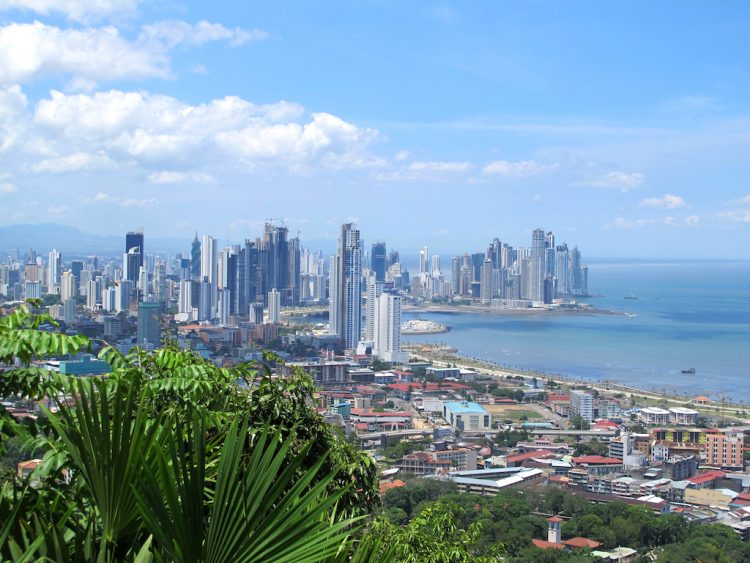
The Bottom Line – Medellín vs Panama City
In our Medellín vs Panama City comparison, Medellín beats out Panama City in nine of 20 categories. Panama City beats out Medellín in six categories and the two cities tie in five categories.
So the end result in this somewhat subjective comparison of 20 categories is that Medellín wins if the categories are equally weighted.
To really determine which city is best for you to live depends on which categories are more important to you. A higher weighting should be used for more important categories.
For example, if cost of living, having a more comfortable springtime climate, good infrastructure and healthcare were most important, Medellín would win.
If having a bigger expat community, being a tax haven, better access to the U.S. and Europe plus being able to use the US dollar were your most important categories, Panama City would win.
The only way to really know which city is better is to spend time in both. I have spent time in both cities. Both have their pros and cons. Neither city is ideal but I much prefer Medellín.
At the end of the day — there’s no “best place to live”. There’s only the best place for you to live. One man’s paradise is another man’s hell.
That’s why we recommend living in a foreign city for six months to a year before committing. Only then can you determine if a foreign city is right for you.
I have met some expats now living in Medellín that used to live in Panama City. They moved when they discovered Medellín and like it better. Common reasons mentioned include the better climate, lower cost of living and particularly the lower cost of real estate.
The foreign retirement publications have been touting Panama City as a top foreign retirement location many times in the past. Panama City has also been touted as a top place to live for digital nomads. But in my opinion Panama City doesn’t really compare that well to Medellín.

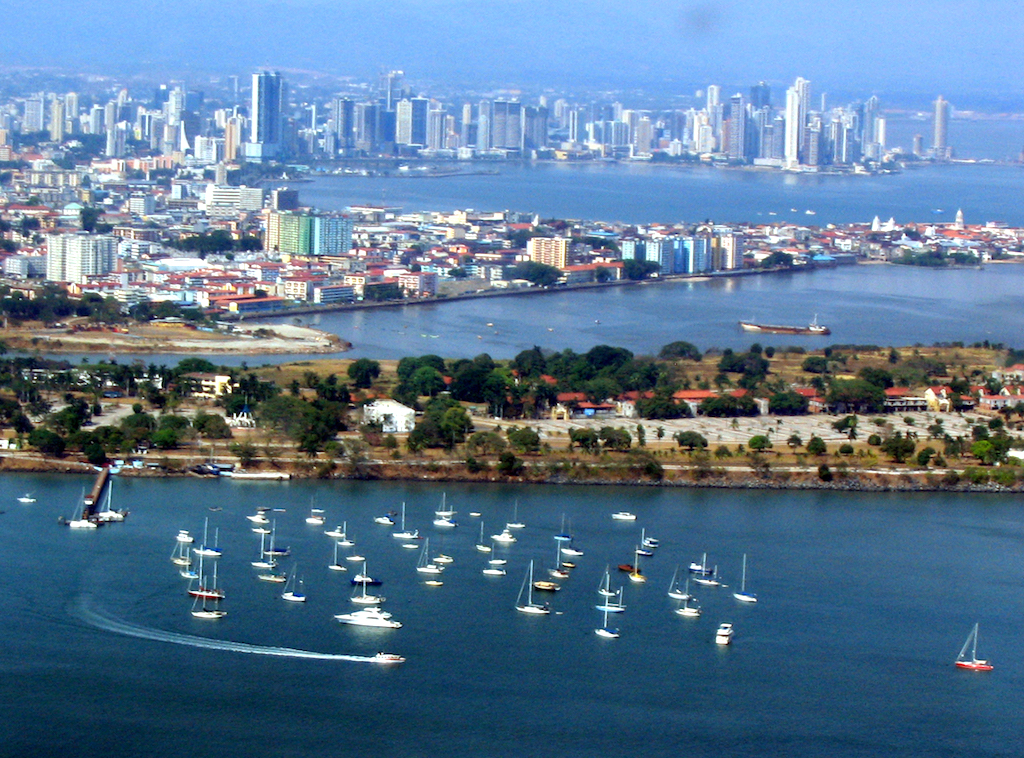

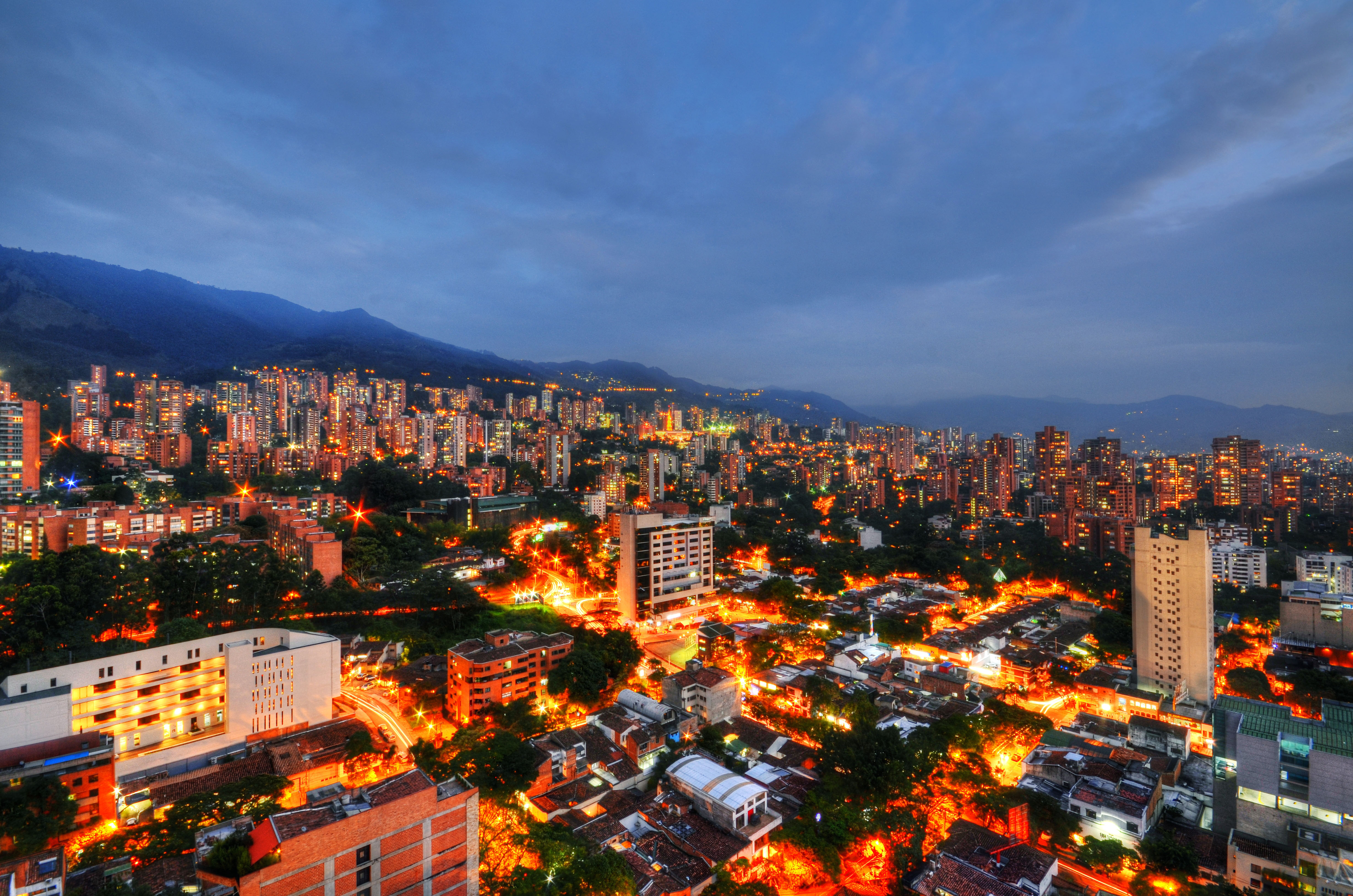








Panama’s nightlife is far more sophisticated and superior to Medellins’ – by a long shot.
Perhaps more sophisticated nightlife in Panama City but there is a bigger variety with more nightlife options in the much bigger city of Medellín.
I disagree from someone living in Medellin, and visiting Panama often. There are a lot more options in Panama City – Medellin is like a country town (but respect your opinion of course).
I second what Bmed said. Medellin is nice and all, but Panama city has much less of a provincial outlook and is far more diverse in terms of restaurants and nightlife. Also, the restaurant scene in Medellin is growing, but it still has a long way to go. It’s still difficult to find the kind of diverse, quality non-Colombian food that a metropolis of 3+ million should have. I’ve read many of the restaurant reviews on this site, but respectfully, I’ve found that many of them miss the mark. I know Medellin has more restaurants, but in terms of quality and diversity, Medellin lags far behind many places in the Americas. Quality, not quantity.
Panama city also has Medellin beat in terms of history. Medellin can’t compete with Panama City’s colonial history and has nothing like the canal. The Casco Viejo in Panama City is a bit run down, but Medellin doesn’t have a historical area that even comes close.
I respectfully disagree that Medellín has more of a provincial outlook. Medellín was named the most innovative city in the world in 2013. The city has achieved a global reputation as a pioneer in inventive architecture and urban renewal. In fact, Bogotá is looking to copy some of the things Medellín has already done like its cable cars for transportation and metro system.
In terms of of restaurants it’s arguable and subjective as to which city has the better restaurants and more diversity. Tourist focused website TripAdvisor actually lists many more restaurants in the Medellín metro than in Panama City so Medellín has a bigger selection, which makes sense since Medellín is more than twice as large in terms of population. Obviously Panama City has a better selection of seafood restaurants. But I have been to many good restaurants in both Medellín and Panama City. I met a couple living in Panama recently in Medellín that told me they like the food better in Medellín.
History is arguable. It’s true that Medellín doesn’t have a historical area like Casco Viejo in Panama. Medellín’s historical sites are more spread out and aren’t concentrated and aren’t well covered in the tourist guidebooks that are uniformly poor in their coverage of Medellín. But Medellín has many historical sites particularly its historical churches that have been covered on this website.
I was in Panama City and around the country last December and it was nearly as expensive as the US. Of course, that was only as a tourist. I paid over $100 for a meal for 2 several times…not many drinks either. Using the dollar as their currency has advantages, but we can’t take advantage of relative currency differences and definitely not the devaluations that have occurred over 2 years. PC is a much more international city and also caterers to sophisticated tourists who want a Latin American experience lite. Yes, once you get away from the major metro area, prices drop, but the same occurs in Colombia. That said, our time in the San Blas islands was amazing.
Jeff, I really like these city comparison articles you’ve been putting out. Good work. Wondering if you can put out a Lima vs. Medellin and a Lima vs. Bogota article in the future. I seem to recall that Dave used to live in Lima, so he would have good input in the comparison versus Medellin. As a suggestion, I’d be interested to add in some more “subjective” / “opinion” dimensions to the analysis. For example, I’d be interested in a section describing what people (and society) in general are like in each city. For example, anecdotally from my perspective in a stereo-typical sense, I’d say that Lima society is more classist (from what I’ve experienced personally and understanding that is a product of Peru’s history), than both Bogota and Medellin (even though both Peru and Colombia, and all countries have their issues with classism)….but I’d be interested to hear more perspectives from expats. I realize that an article containing sensitive topics such as classism (or any other subjective topics) could raise some passions, but still these are things myself and other expats could have interest in knowing when visiting the cities. Thanks
Hi Andy,
Thanks. The city comparisons have been very popular so I plan to do at least a few more. Comparing to Lima is a very good suggestion. I have been to Lima a few times and I also have a friend living there so I could easily do a comparison of Lima to Medellín and perhaps Bogotá.
I would say Lima would compare more to Bogota based on size and population, but with Medellin being smaller, I guess it could be a good look at the two
I lived in downtown Panama City for two years and it was basically unlivable. The traffic, noise, and pollution were unbearable. PC is very inconvenient in so many aspects I’d rather live in the U.S. Like this article notes it’s not really cheaper to live in PC so that right there practically eliminates it from any competition. Also, Panama City gets a lot of rain for about 7 months straight, I don’t miss that AT ALL. I also visited the rest of Panama and it consists of mainly small towns and I’m not a small town person. Bottom line: If you want to live in Panama City you’re going to have to deal with many inconveniences that you wouldn’t have to deal with in even the biggest American cities or their suburbs.
I am going to check out Medellin for six months starting this November. I’m looking forward to the moderate weather, the cheaper prices, the better service and shopping. Medellin looks very nice from many standpoints but like this article says it’s best to try it for 6 months or a year before deciding to move there permanently. I’m hoping I will like Medellin enough to at least live there during the winter months, that alone would be fantastic for my lifestyle. Anything longer would be icing on the cake!
Well, almost 16 months later, what do you think?
I ruled out Panama City because of the trash. I thought PC was a dirty city. In contrast I was blown away by the cleanliness of Medellin. Just my two cents.
I agree with you. Medellín is the cleanest city I have been to in Latin America. For example, I’m amazed at how clean the Medellín metro is considering it’s 20 years old.
Hi Jeff,
I really enjoyed the article. I am in Medellin now. I am leaving in 2 weeks but will return in January for a longer stay. I have been to Panama City and agree with you that, for me, Medellin es mejor.
The homicide rate in Panama was actually 9.3 in 2015 and not the 12.0 you wrote above.
Not sure how a city with double the homicide rate is Arguable safer or how you came to that conclusion.
The homicide rate in Panama in 2015 was 12.0 – see this article in Spanish: http://www.elheraldo.hn/mundo/921928-466/bajan-homicidios-en-panam%C3%A1-pero-sigue-percepci%C3%B3n-inseguridad.
In terms of safety I said “Panama City arguably wins here. Panama City generally has lower crime rates than are found in the much bigger city of Medellín.” I said Panama City wins this safety category.
But in both cities take care and don’t go out with all that jewelry on and don’t flash cell phones and money. Also keep in mind that lifestyle plays a significant role in safety.
BBC has it at 9.3 in 2015.
http://www.bbc.com/news/world-latin-america-34378636
I agree you have to take care in any latin american country regarding flashing wealth and your lifestyle is a huge contributing factor.
I think you should only go from raw statitics if you can.
Personally, I prefer Medellin
Thanks for the analysis and interesting articles.
Look at that date on that BBC article. It’s from September 2015 so it’s not the homicide rate for the full year last year. It’s only for nine months. The article I referenced has the homicide rate for Panama for the full year.
It would be helpful if in the climate category you could also cover humidity levels and rainfall. Panama City is indeed hotter (which for some of us is a good thing!), but is also extremely humid and has an eight month rainy season when it rains at least once every day.
Hi Louise,
Thanks. I added information about humidity and rainfall in the climate category. Panama City has pretty oppressive humidity.
All the statistics are interesting, but the most important thing to me is the people. I’ve been to Panama 4 times, and Medellin 8 times. In my humble opinion, the Colombian people are much nicer, friendlier, etc., than anything I’ve seen in Panama. It’s just a cultural difference, and others will disagree, but that’s how I see it. People in Colombia are just happier and more polite, and it rubs off on you. Medellin (or Colombia in general), I could see myself living in. But after 4 times in Panama, I have no desire to go back.
I agree with you. In general people in Colombia are happier and more polite in my experience. In fact, Colombia regularly places near the top in global happiness surveys.
For example, here’s a survey in 2015 from WIN/Gallup where Colombia was ranked as the happiest country in the world: http://www.wingia.com/web/files/richeditor/filemanager/WINGIA_Final_Press_Release_EOY_2015.pdf.
Wow! Nice article. I would not have visited Medellin if I had not read it. But I am back now and yes, the people were so very polite. I do not know the language and many times could not understand what was said to me by the corner guy, but they always had a smile and took their time trying to understand my hand wavings. I’d go back again just for how they laughed at me. It made me laugh at myself, and that can change your outlook on life!
I appreciate these comparisons and I find them very informative. I have only one gripe. I have been to neither city and Medellin has always looked like an awesome place, but I am an ocean person. So to just say “Panama City obviously has many water activities.” is doing it a bit of an injustice. Water activities include everything from surfing, sailing, boating, fishing diving, even just relaxing at the beach. In my opinion, having water in a place changes the whole dynamic and lifestyle. While I do understand that some people are more mountain-minded, but paragliding and riding ATVs do not provide a whole lifestyle in the same way that having an ocean or bay does. That being said, I’ve always wanted to live in Medellin for a while, but I know that ultimately – with no ocean I don’t think I could live there.
The Caribbean beaches are only an hour flight from Medellín. Also there is near to Medellín the huge lake at Guatapé that has many water activities, many in Medellín go there for the weekends. It’s only about a 2-hour drive from Medellín.
It’s a trade-off. You have to decide what is more important to you. Beach locations will typically have a higher cost of living and hotter climate. Or you can have a lower cost of living and better climate in Medellín and visit beaches on vacation.
Great information! I didn’t know about Guatape – For example, surfers aren’t going to relocate to Medellin permanently. But I do like its centrality of being able to fly to Caribbean beaches or other surf spots in South/Central America. Again, I love the blog and the city comparisons. Thanks!
Last time I checked water activities includes lakes and rivers. As someone who lives at the beach, I find rivers and lakes a refreshing experience.
Jeff- thanks much for your comparison articles!! I’ve seen the following comment a few times, but haven’t grasped the meaning (e.g., is it a “positive” or a “negative”):
“I have lived in Colombia for over six years. But I have paid Colombian income taxes only one year that were less than 10 percent of the income taxes I paid in the U.S. “
Hi Gary,
It can be a negative as there are other countries that don’t tax worldwide income like Colombia does like Panama. But that is easily balanced out by the low cost of living in Colombia. If I added this income tax I paid in Colombia to the rent I pay, the total is still less than the rent I’d pay in the U.S. for a similar apartment. The income taxes I paid in Colombia are another cost of living but it’s not that much.
This happened since I’m married and have most of the income and Colombia doesn’t have married filing jointly like in the U.S., so I essentially file as single in Colombia and there is only a small deduction for dependent support. When I was single I didn’t have to pay any income taxes in Colombia since I paid higher income taxes in the U.S., which are deducted from income taxes due in Colombia. It really depends on you personal situation if you’ll have to pay income taxes in Colombia..
Jeff,
Do you know how tolerant these respective cities are of African-Americans? I am staying in Bogota mid-May. I wish to stay an additional 2 days in either Medellin, Cartagena or Panama City. For perspective, I’m a 36yr old investment banker who prefers upscale hotels (I am staying at the Four Seasons in Bogota and will either stay at the Sofitel in Cartagena or the Waldorf in PC). That said, I do prefer exploring non-touristy areas and would likely visit a bar or nightclub. I’ve read a ton of mixed reviews and am more confused now than ever.
Thanks.
Hi Sonny, this video should help posted on this site back in 2013 – http://medellinliving.com/black-colombia/.
Cartagena has a higher percentage of African Americans than Medellín. I would say that Panama City possibly has a lower percentage based on my trips there.
Jeff, I like your articles and recently was looking into retiring in Medallion. However, recent info on taxation of pension benefits has changed my mind. You stated there is not double taxation, and thiso is technically correct, but one can understand why others may feel there is. What there is is Additional taxation of one’s social security and pension benefits. For example, the U.S. taxes a max of 85% of social security. The 15% that they don’t tax, Colombia does tax. There is no zero tax level for foreign pensions, only Colombian pensions, so we immediately move up to the 19% bracket, with a soon to follow 28% bracket. If we pay the U.S. say 15%, then the difference will be owed in Colombian taxes. You mix income in with pensions when they are not treated the same. You earn an income and do not as yet qualify for SSAN, as you have admitted. Additional concerns surround Colombian taxes on overall net worth of around 3%. In addition, though the U.S. and Colombia share tax info, they still do not have a formal agreement. This means that an Expat retiring there may become ineligible for social security after being there for more than 183 Days! There is a limited number of countries that have entered into this agreement. Costa Rican and Panama have done so, but Colombia has not. Those establishing residency in those countries that have not entered into an agreement can, and probably will see their Social Security checks stopped and held! I cannot consider moving there under these oppressive conditions regardless of how nice the weather is there.
Hi Jeff, We have been to Medellin twice both in 2016. Building Cranes were every where. We are planning another trip this April. As we understand it Laurelas (sp) And Sabaneta have grown in popularity. Is there any other areas we should research (searching for that next hot spot lol) Panama is also on our list BUT the HIGH humidity and higher prices will probably result in short visit . we plan on Buying an apartment in Colombia so any input would be greatly appreciated.
Hello Bruce,
You might want to check out Belen. It’s becoming more and more popular among foreigners and is conveniently located near Laureles.